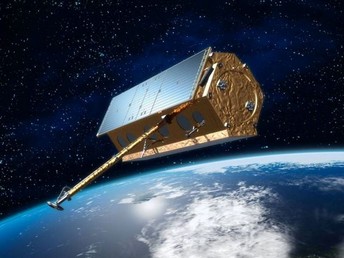ROHP-PAZ

ROHP-PAZ is a mission of opportunity: The Spanish Earth Observation PAZ satellite, planned to be launched in 2013 (finally successfully launched on Feb 22, 2018), was initially designed to carry a Synthetic Radar Aperture (SAR) as primary and sole payload. It included an IGOR+ advanced Global Navigation Satellite System (GNSS) receiver for precise orbit determination. The design of this particular GNSS receiver allows the tracking of occulting signals, that is, signals transmitted by navigation satellites setting below the horizon of the Earth (or rising above it). The Spanish Ministry for Science and Innovation (MICINN) approved a proposal aimed to modify the original plans of PAZ, by including a polarimetric GNSS Radio-Occultation (RO) payload. This means to enable the radio occultation capabilities of IGOR+, together with the acquisition and installation of a GNSS antenna oriented towards the limb of the Earth.
The Radio Occultation technique originated in Planetary sciences for the study of other Planets' atmospheres, and measures the bending caused by the atmospheric refractivity gradients on the propagation of the radio link. This bending can be used to infer vertical radio-refractivity profiles from which ionospheric total electron content can be inferred as well as thermodynamic variables such as atmospheric pressure, temperature, water vapor pressure from the stratosphere down to the boundary layer with a vertical resolution close to 300 m. RO thermodynamical profiles are assimilated operationally into several global numerical weather prediction models (NWP) [Healy et al., 2005]. Latest results show that ROs improve the weather forecast, reducing the NWP model biases and becoming the operational observation system of fifth-highest impact among the 24 available systems [Cucurull and Derber, 2008, Cardinali, 2009]. The use of GPS RO is thus a key component of the operational observing system [NRC, 2007].
Since 1995, GNSS RO has now been flown on a number of missions, among them: GPS/MET, Oersted, CHAMP, SAC-C, or GRAS/METOP. Since 2006, the main source of RO data is a constellation of 6 Low-Earth Orbiters, the Taiwan/USA FORMOSAT-3/COSMIC mission, in the form of globally distributed profiles. However, the number of RO profiles risks to dramatically drop after the decommissioning of the COSMIC constellation. With a mission life-expectancy of 5 years, COSMIC already begun to degrade in 2011. PAZ is planned to be launched when this happens and before a possible new RO constellation is deployed.
Moreover, ROHP-PAZ is a proof-of-concept experiment: for the first time ever, GNSS RO measurements will be taken at two polarizations, to exploit the potential capabilities of polarimetric radio occultation for detecting and quantifying heavy precipitation events. If the concept is proved, PAZ will mean a new application of the GNSS Radio-Occultation observations, by providing coincident thermodynamic and precipitation information with high vertical resolution within regions with thick clouds.
This might help understanding the thermodynamic conditions underlying intense precipitation, which is relevant because these events remain poorly predicted with the current climate and weather model parametrization. A better understanding of the thermodynamics of heavy precipitation events is necessary towards improving climate models and quantifying the impact of climate variability on precipitation [Wentz et al., 2007, Allan and Soden, 2008]. The particular advantage of GNSS polarimetric RO is that their signals are in the microwave spectrum which, unlike infrared sensing technology, is little influenced by clouds, not even by the thick clouds that are typically associated with heavy precipitation.
[update Dec, 2019]
The PAZ satellite was finally launched on Feb 22, 2018. The ROHP experiment was activated on May 10th, 2018, and the analyses of the early stages of the experiment show consistency between the phase shift measurements and the presence of heavy precipitation. The studies show larger signatures for heavier precipitation, confirming the theoretical studies performed before the launch [Cardellach, 2019].